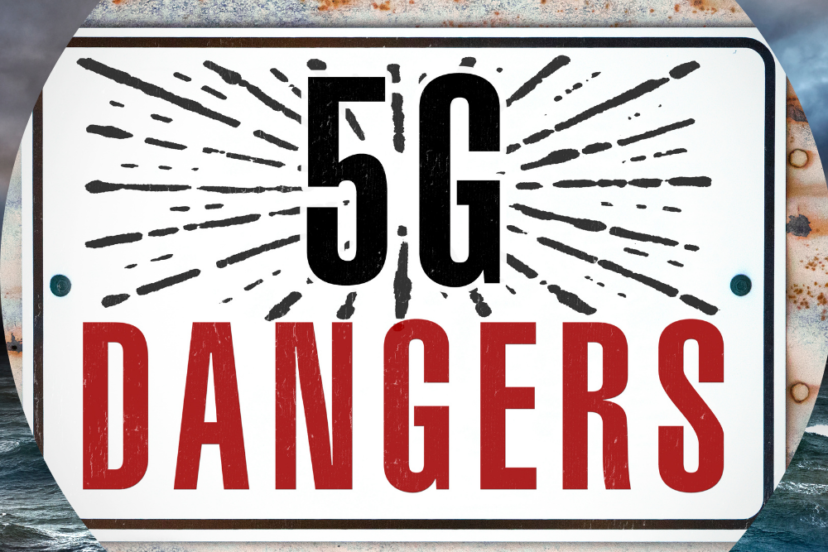Government Actions to Protect Against the Dangers of 5G: Are They Enough? As 5G technology rolls…
The Invisible Threat: Unveiling the Dangers of 5G in Your Home

Dangers of 5G in Your Home
In the age of ever-advancing technology, 5G has emerged as the latest marvel promising lightning-fast internet speeds and seamless connectivity. However, amidst the allure of this cutting-edge technology lies a lurking concern – the potential dangers it poses within the confines of our homes. As 5G networks proliferate, so do apprehensions regarding its impact on human health. Let’s delve into the depths of this contentious issue to unravel the hidden risks of 5G in your very own house.
At the heart of the controversy surrounding 5G lies the electromagnetic radiation it emits. Unlike its predecessors, 5G operates at higher frequencies, necessitating the deployment of a dense network of small cell antennas to ensure coverage. These antennas emit radiofrequency (RF) radiation, a type of electromagnetic radiation that has been linked to various health risks. While proponents argue that the levels of radiation emitted by 5G are within regulatory limits, skeptics remain unconvinced, citing the lack of comprehensive long-term studies on its effects.
Concerns Raised
One of the primary concerns surrounding 5G radiation is its potential carcinogenicity. Although the World Health Organization (WHO) classifies RF radiation as a Group 2B possible carcinogen, studies examining its association with cancer have yielded inconclusive results. Nevertheless, some researchers argue that the higher frequencies used in 5G technology may penetrate the skin more deeply, raising concerns about skin cancer and other adverse health effects.
Moreover, 5G radiation has been implicated in disrupting biological processes within the body. Research suggests that exposure to RF radiation can lead to oxidative stress, DNA damage, and alterations in cellular metabolism. These physiological changes have been linked to a myriad of health problems, including neurological disorders, reproductive issues, and immune system dysfunction. Consequently, prolonged exposure to 5G radiation within the confines of one’s home may pose a significant risk to overall health and well-being.
Privacy Issues
The deployment of 5G infrastructure in residential areas raises concerns about potential privacy violations. With the proliferation of smart devices connected to 5G networks, the amount of personal data transmitted within the home has skyrocketed. From smart thermostats to voice-activated assistants, these devices constantly collect and transmit sensitive information, leaving homeowners vulnerable to surveillance and data breaches. Moreover, the advent of smart meters, enabled by 5G technology, raises concerns about the collection of detailed energy usage data, further compromising privacy and security.
Aesthetics
In addition to health and privacy concerns, the aesthetic impact of 5G infrastructure on residential neighborhoods cannot be overlooked. The installation of small cell antennas on street lights, utility poles, and buildings has sparked outcry among residents, who argue that these unsightly structures detract from the charm and character of their communities. Furthermore, the potential decrease in property values associated with proximity to 5G infrastructure has left homeowners grappling with the economic repercussions of this controversial technology.
Despite the mounting concerns surrounding 5G, regulatory agencies and telecommunications companies continue to forge ahead with its deployment. Proponents argue that 5G technology holds the key to unlocking a plethora of innovations, from autonomous vehicles to remote healthcare services. However, critics caution against prioritizing technological advancement at the expense of public health and safety.
The Invisible Threat: Unveiling the Dangers of 5G in Your Home
In conclusion, the advent of 5G technology heralds a new era of connectivity and convenience, yet it also brings forth a host of unprecedented challenges. From potential health risks to privacy concerns and aesthetic disruptions, the deployment of 5G in residential areas raises profound questions about the trade-offs between technological progress and human well-being. As we navigate the complexities of this burgeoning technology, it is imperative to prioritize rigorous scientific research, robust regulation, and informed public discourse to mitigate the potential dangers lurking within our very own homes. Only then can we harness the full potential of 5G while safeguarding the health, privacy, and integrity of our communities.
Comments (1)
Comments are closed.




[…] (EMFs) and various health problems, including cancer, infertility, and neurological disorders. With 5G’s deployment involving the installation of small cell antennas in close proximity to homes, schools, and […]